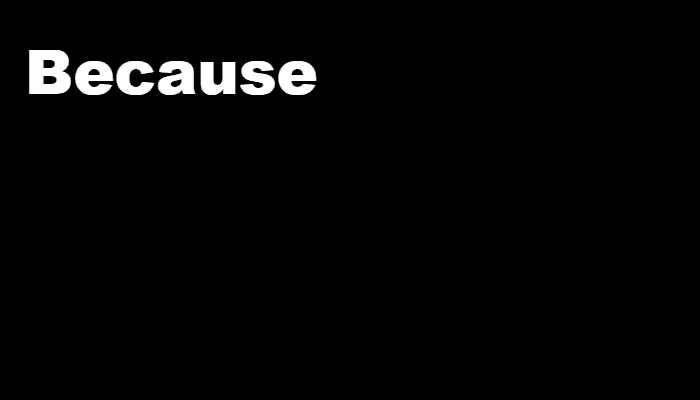
by Robyn Bolton | Nov 19, 2024 | Innovation, Leadership, Tips, Tricks, & Tools
“We identified four opportunities for market expansion, all adjacent to our current business, and entry into any one of them is almost guaranteed to materially grow our business. But no one is doing anything.”
I wanted to be surprised. Instead, I sighed and asked the question I knew he couldn’t answer.
“What are your colleagues afraid of?”
The Four Horsemen of the Apocalypse
Most of the time, when opportunities are clear, but action is absent, it’s because one of the first three horsemen of the innovation apocalypse appeared:
- Short-termism: “The CFO is worried we may miss the quarter, so we’re starting to make cuts.”
- Size: “We have a new President coming in who wants to put his stamp on things, so he’s cutting anything that won’t double out business in three years.”
- Scarcity: “We’re implementing a new process, and this would just be one thing too many for people to handle.”
The business my client described has doubled in the past five years. After fifty years of steady, reliable, and predictable revenue, its top line suddenly became the mythical “hockey stick of growth.” The technological driver of this change is more likely to be the “new normal” than a fad, so the business is expected to double again in the next five years.
Leadership isn’t worried about delivering the next quarter, year, or five years. They know that they have the resources they need and can access more when the time is right. They’re confident that the opportunities identified are feasible and meaningful.
Yet, they will not act.
I’m not afraid. I’m biased!
Behavioral economists, psychologists, and sociologists explain situations like the above by pointing out our “cognitive biases”—the “irrational errors that are programmed into our brains.” For example, the first three horsemen could be known as Present Bias, the hard-easy effect, and Loss Aversion.
As of 2024, over 150 cognitive biases have been identified.
While it’s comforting to blame programming bugs beyond our awareness and control for our “irrational errors,” this approach lets us off the hook a bit too easily.
I’m not biased. I’m afraid!
Fear is at the root of most, if not all, of these biases because emotions, not programming bugs in our brains, drive our decisions.
The study of how our emotions impact decision-making didn’t take off until the early 2000s. It really accelerated in 2015 when professors from Harvard, UC Riverside, Claremont McKenna College, and Carnegie Mellon published a meta-study on the topic and declared:
The research reveals that emotions constitute potent, pervasive, predictable, sometimes harmful and sometimes beneficial drivers of decision making. Across different domains, important regularities appear in the mechanisms through which emotions influence judgments and choices.
Bottom line – we decide with our hearts and justify with our heads.
Our hearts are afraid that we’ll lose the respect of our peers and loved ones, the reputations we’ve worked decades to build, the physical goods and intangible experiences that project our societal status, or the financial safety of a regular paycheck.
And, as my brilliant and kind sister told me, “These feelings we feel, these feelings are real.”
I’m afraid and biased and brave!
Next time you see someone (maybe you?) do something “irrational,” get curious and ask:
- What cognitive bias are they falling prey to?
- What is the fear that’s driving that bias?
- How can you help them to be brave, live with the fear, and move forward?
I’m curious…when was the last time you were afraid, biased, and brave?

by Robyn Bolton | Nov 6, 2024 | Leadership, Tips, Tricks, & Tools
Corporate offsites – the phrase conjures images of everything from “mandatory fun” with colleagues to long and exhausting days debating strategy with peers. Rarely are the images something that entice people to sit up and shout, “YEA!” But what if the reality could be something YEA! worthy?
That’s exactly what the authors of the recent HBR article, “Why Offsites Work – and How to Get the Most Out of Them,” describe and offer a guide to accomplish.
Offsites May Be the Answer to the WFH vs. RTO Debate
Offsites aren’t new but they’ve taken on a new role and new significance as companies grapple with how to manage Work from Home (WFH) and Return To Office (RTO) policies.
As with most things in life, the pendulum swings from one extreme to another until eventually, finally, landing in a stable and neutral midpoint. When the pandemic hit, we swung from every day in the office to every day at home. Then society opened back up and corporate landlords came calling for rent, whether or not people were in the offices, so we swung back to Return to Office mandates.
Offsites, the authors suggest, may be the happy medium between the two extremes because offsites:
“give people opportunities for interactions that otherwise might not happen. Offsites create unique opportunities for employees to connect in person, forming new relationships and strengthening existing ones. As a result, offsites help people learn about others’ knowledge and build interpersonal trust, which are both critical ingredients for effective collaboration.”
Offsite Connections Lead to Collaborations that Generate ROI
After analyzing eight years of data from a global firm’s offsites and 350,000 “instances of formal working relationships” for 750 employees, the authors found that intentionally designed offsites (more on that in a moment) yield surprisingly measurable and lasting results:
- 24% more incoming requests for collaboration amongst attendees post vs. pre-offsite (silos busted!)
- 17% of new connections were still active two years after the offsite (lasting change!)
- $180,000 in net new revenue from collaborations within the first two months post offsite (real results!)
The benefits event extended to non-attendees because they “seemed to get the message that collaboration is important and wanted to demonstrate their commitment to being collaborative team players” and “likely identified new collaborators after the offsite through referrals.”
How to Design Offsites That Get Results
Four key strategies emerged from the authors’ research and work with over 100 other organizations:
- Design for the people in the audience, not the people on stage. Poll attendees to understand their specific needs and goals, then design collaborative activities, not management monologues.
- Design for the new hires, not the tenured execs. Create opportunities for new hires to meet, connect with, and work alongside more experienced colleagues.
- Set and communicate clear goals and expectations. Once the offsite is designed and before it happens, tell people what to expect (the agenda) and why to expect it (your design intentions and goals). Also, tell them how to make the most of the offsite opportunities by thinking about the skill and network gaps they want to fill.
- Track activities to measure ROI. The connections, collaborations, and commitments that start at the offsite need to continue after it in the form of ongoing communication, greater collaboration, and talent engagement. Yes, conduct a post-event survey immediately after the event but keep measuring every 2-3 months until the next offsite. The data will reveal how well you performed against your goals and how to do even better the next time.
Offsites can be a powerful tool to build an organization’s culture and revenue, but only if they are thoughtfully designed to go beyond swanky settings, sermons from the stage, and dust-collecting swag and build the connections and collaborations that only start when people are together, in-person, outside of the office.

by Robyn Bolton | Oct 22, 2024 | Leadership, Tips, Tricks, & Tools
How many times a day do you ask someone to do something? If you total all the requests you make of coworkers, family members, friends, people at restaurants and shops, and even strangers, the total is somewhere between 100 and 1 bazillion. Now, what if I told you that by including just one word in your request, the odds of receiving a positive response increase by 50%?
And no, that word is not “please.”
The real magic word
Harvard 1978. Decades before everyone had access to computer labs, home computers, and personal printers, students had to line up at the copy machine to make copies. You could easily spend hours in line, even if you only had a few copies to make. It was an inefficient and infuriating problem for students.
It was also a perfect research opportunity for Ellen Langer, a professor in Harvard’s Psychology Department.
Prof. Langer and her colleagues asked students to break into the line using one of three phrases:
- “Excuse me, I have 5 pages. May I use the xerox machine?”
- “Excuse me, I have 5 pages. May I use the xerox machine, because I have to make copies?”
- “Excuse me, I have 5 pages. May I use the xerox machine, because I’m in a rush?”
The results were definitive and surprising. Students who used the first phrase were successful 60% of the time, but those who used the phrases with “because” were successful 93% and 94% of the time.
“Because” matters. The reason does not.
Note that in phrases 2 and 3, the reason the student is asking to cut in line isn’t very good. You can practically hear the snarky responses, “Of course, you have to make copies; why else would you be at the copy machine?” or “We’re all in a rush,” and the request is denied.
But that didn’t happen.
Instead, the research (and hundreds of subsequent studies) showed that when the ask is simple or familiar, people tend to follow instructions or respond positively to requests without paying attention to what’s said, even if the instructions don’t make sense or the request disadvantages them in some way. Essentially, people hear “because,” assume it’s followed by a good reason and comply.
“Because” matters. How you use it matters more.
The power of “because” isn’t about manipulation or coercion. It’s about fostering a culture of transparency, critical thinking, and effective communication.
Taking the time to think about when and how to communicate the Why behind your requests increases your odds of success and establishes you as a strategic and thoughtful leader. But building your “Because’ habit takes time, so consider starting here:
Conduct a “Because” Audit: For one day, track your use of “because.” How many times do you make a request? How many times to you explain your requests with “because?” How many times do you receive a request, and how many of those include “because?” Simply noticing when “because” is used and whether it works provides incredible insights into the impact it can have in your work.
Connect your “Becauses” As leaders, we often focus on the “what” and “how” of directives, but the “why” is equally crucial. Take your top three strategic priorities for the quarter and craft a compelling “because” statement that clearly articulates the reasoning behind it. For instance, “We’re expanding into the Asian market because it represents a $50 billion opportunity that aligns perfectly with our core competencies.” This approach not only provides clarity but also helps in rallying your team around a common purpose.
Cascade the “Because” Habit: Great leaders don’t just adopt best practices; they institutionalize them. Challenge your direct reports to incorporate “because” into their communications. When they bring you requests, ask them for the “because’ if they don’t offer it. Make it a friendly competition and celebrate people who use this technique to drive better outcomes.
Tell me how you’ll start because then you’re more likely to succeed.
(see what I did there?)

by Robyn Bolton | Sep 17, 2024 | Leadership, Stories & Examples, Tips, Tricks, & Tools
How many times have you proposed a new idea and been told, “We can’t do that?” Probably quite a few. My favorite memory of being told, “We can’t do that,” happened many years ago while working with a client in the publishing industry:
Client: We can’t do that.
Me: Why?
Client: Because we already tried it, and it didn’t work.
Me: When did you try it?
Client: 1972
Me: Well, things certainly haven’t changed since 1972, so you’re right, we definitely shouldn’t try again.
I can only assume they appreciated my sarcasm as much as the idea because we eventually did try the idea, and, 30+ years later, it did work. But the client never would have enjoyed that success if my team and I had not seen through “we can’t do that” and helped them admit (confess) what they really meant.
Quick acknowledgment
Yes, sometimes “We can’t do that” is true. Laws and regulations define what can and can’t be done. But they are rarely as binary as people make them out to be. In those gray areas, the lie of “we can’t do that” obscures the truth of won’t, not able to, and don’t care.
“I won’t do it.”
When you hear “can’t,” it usually means “won’t.” Sometimes, the “won’t” is for a good reason – “I won’t do the dishes tonight because I have an urgent deadline, and if I don’t deliver, my job is at risk.” Sometimes, the “won’t” isn’t for a good reason – “I won’t do the dishes because I don’t want to.” When that’s the case, “won’t” becomes “can’t” in the hope that the person making the request backs off and finds another solution.
For my client, “We can’t do that” actually meant, “I won’t do that because it failed before and, even though that was thirty years ago, I’m afraid it will fail again, and I will be embarrassed, and it may impact my reputation and job security.”
You can’t work with “can’t.” You can work with “won’t.” When someone “won’t” do something, it’s because there’s a barrier, real or perceived. By understanding the barrier, you can work together to understand, remove, or find a way around it.
“I’m not able to do it.”
“Can’t” may also come with unspoken caveats. We can’t do that because we’ve never done it before and are scared. We can’t do that because it is outside the scope of our work. We can’t do that because we don’t know how.
Like “won’t,” you can work with “not able to” to understand the gap between where you are now and where you want to go. If it’s because you’re scared of doing something new, you can have conversations to get smarter about the topic or run small experiments to get real-world learnings. If you’re not able to do something because it’s not within your scope of work, you can expand your scope or work with people who have it in their scope. If you don’t know how, you can talk to people, take classes, and watch videos to learn how.
“I don’t care.”
As brave as it is devastating, “we can’t do that” can mean “I don’t care enough to do that.”
Executives rarely admit to not caring, but you see it in their actions. When they say that innovation and growth are important but don’t fund them or pull resources at the first sign of a wobble in the business, they don’t care. If they did care, they would try to find a way to keep investing and supporting the things they say are priorities.
Exploring options, trying, making an effort—that’s the difference between “I won’t do it” and “I don’t care.” “I won’t do that” is overcome through logic and action because the executive is intellectually and practically open to options. “I don’t care” requires someone to change their priorities, beliefs, and self-perception, changes that require major personal, societal, or economic events.
Now it’s your turn to tell the truth
Are you willing to ask the questions to find them?

by Robyn Bolton | Aug 28, 2024 | Innovation, Leadership, Tips, Tricks, & Tools
You were born creative. As an infant, you had to figure many things out—how to get fed or changed, get help or attention, and make a onesie covered in spit-up still look adorable. As you grew older, your creativity grew, too. You drew pictures, wrote stories, played dress-up, and acted out imaginary stories.
Then you went to school, and it was time to be serious. Suddenly, creativity had a time and place. It became an elective or a hobby. Something you did just enough of to be “well-rounded” but not so much that you would be judged irresponsible or impractical.
When you entered the “real world,” your job determined whether you were creative. Advertising, design, marketing, innovation? Creative. Business, medicine, law, engineering? Not creative.
As if Job-title-a-determinant-of-creativity wasn’t silly enough, in 2022, a paper was published in the Journal of Applied Psychology that declared that, based on a meta-analysis of 259 studies (n=79,915), there is a “male advantage in creative performance.”
Somewhere, Don Draper, Pablo Picasso, and Norman Mailer high-fived.
But, as every good researcher (and innovator) knows, the headline is rarely the truth. The truth is that it’s contextual and complicated, and everything from how the original studies collected data to how “creativity” was defined matters.
But that’s not what got reported. It’s also not what people remember when they reference this study (and I have heard more than a few people invoke these findings in the three years since publication).
That is why I was happy to see Fortune report on a new study just published in the Journal of Applied Psychology. The study cites findings from a meta-analysis of 753 studies (n=265,762 individuals) that show men and women are equally creative. When “usefulness (of an idea) is explicitly incorporated in creativity assessment,” women’s creativity is “stronger.”
Somewhere, Mary Wells Lawrence, Frida Kahlo, and Virginia Woolf high-fived.
Of course, this finding is also contextual.
What makes someone “creative?”
Both studies defined creativity as “the generation of novel and useful ideas.”
However, while the first study focused on how context drives creativity, the second study looked deeper, focusing on two essential elements of creativity: risk-taking and empathy. The authors argued that risk-taking is critical to generating novel ideas, while empathy is essential to developing useful ideas.
Does gender influence creativity?
It can. But even when it does, it doesn’t make one gender more or less creative than the other.
Given “contextual moderators” like country-level culture, industry gender composition, and role status, men tend to follow an “agentic pathway” (creativity via risk-taking), so they are more likely to generate novel ideas.
However, given the same contextual moderators, women follow a “communal pathway” (creativity via empathy), so they are more likely to generate useful ideas.
How you can use this to maximize creativity
Innovation and creativity go hand in hand. Both focus on creating something new (novel) and valuable (useful). So, to maximize innovation within your team or organization, maximize creativity by:
- Explicitly incorporate novelty and usefulness in assessment criteria. If you focus only on usefulness, you’ll end up with extremely safe and incremental improvements. If you focus only on novelty, you’ll end up with impractical and useless ideas.
- Recruit for risk-taking and empathy. While the manifestation of these two skills tends to fall along gender lines, don’t be sexist and assume that’s always the case. When seeking people to join your team or your brainstorming session, find people who have demonstrated strong risk-taking or empathy-focused behaviors and invite them in.
- Always consider the context. Just as “contextual moderators” impact people’s creative pathways, so too does the environment you create. If you want people to take risks, be vulnerable, and exhibit empathy, you must establish a psychologically safe environment first. And that starts with making sure there aren’t any “tokens” (one of a “type”) in the group.
Which brings us back to the beginning.
You ARE creative.
How will you be creative today?

by Robyn Bolton | Aug 18, 2024 | Customer Centricity, Innovation, Tips, Tricks, & Tools
AI is everywhere: in our workplaces, homes, schools, art galleries, concert halls, and even neighborhood coffee shops. We can’t seem to escape it. Some hope it will unlock our full potential and usher in an era of creativity, prosperity, and peace. Others worry it will eventually replace us. While both outcomes are extreme, if you’ve ever used AI to conduct research with synthetic users, the idea of being “replaced” isn’t so wild.
For the past month, I’ve beta-tested Crowdwave, an AI research tool that allows you to create surveys, specify segments of respondents, send the survey to synthetic respondents (AI-generated personas), and get results within minutes.
Sound too good to be true?
Here are the results from my initial test:
- 150 respondents in 3 niche segments (50 respondents each)
- 51 questions, including ten open-ended questions requiring short prose responses
- 1 hour to complete and generate an AI executive summary and full data set of individual responses, enabling further analysis
The Tool is Brilliant
It took just one hour to gather data that traditional survey methods require a month or more to collect, clean, and synthesize. Think of how much time you’ve spent waiting for survey results, checking interim data, and cleaning up messy responses. I certainly did and it made me cry.
The qualitative responses were on-topic, useful, and featured enough quirks to seem somewhat human. I’m pretty sure that has never happened in the history of surveys. Typically, respondents skip open-ended questions or use them to air unrelated opinions.
Every respondent completed the entire survey! There is no need to look for respondents who went too quickly, chose the same option repeatedly, or abandoned the effort altogether. You no longer need to spend hours cleaning data, weeding out partial responses, and hoping you’re left with enough that you can generate statistically significant findings.
The Results are Dangerous
When I presented the results to my client, complete with caveats about AI’s limitations and the tool’s early-stage development, they did what any reasonable person would do – they started making decisions based on the survey results.
STOP!
As humans, we want to solve problems. In business, we are rewarded for solving problems. So, when we see something that looks like a solution, we jump at it.
However, strategic or financially significant decisions should never rely ona single data source. They are too complex, risky, and costly. And they definitely shouldn’t be made based on fake people’s answers to survey questions!
They’re Also Useful.
Although the synthetic respondents’ data may not be true, it is probably directionally correct because it is based on millions and maybe billions of data points. So, while you shouldn’t make pricing decisions based on data showing that 40% of your target consumers are willing to pay a 30%+ premium for your product, it’s reasonable to believe they may be willing to pay more for your product.
The ability to field an absurdly long survey was also valuable. My client is not unusual in their desire to ask everything they may ever need to know for fear that they won’t have another chance to gather quantitative data (and budgets being what they are, they’re usually right). They often ignore warnings that long surveys lead to abandonment and declining response quality. With AI, we could ask all the questions and then identify the most critical ones for follow-up surveys sent to actual humans.
We Aren’t Being Replaced, We’re Being Spared
AI consumer research won’t replace humans. But it will spare us the drudgery of long surveys filled with useless questions, months of waiting for results, and weeks of data cleaning and analysis. It may just free us up to be creative and spend time with other humans. And that is brilliant.





